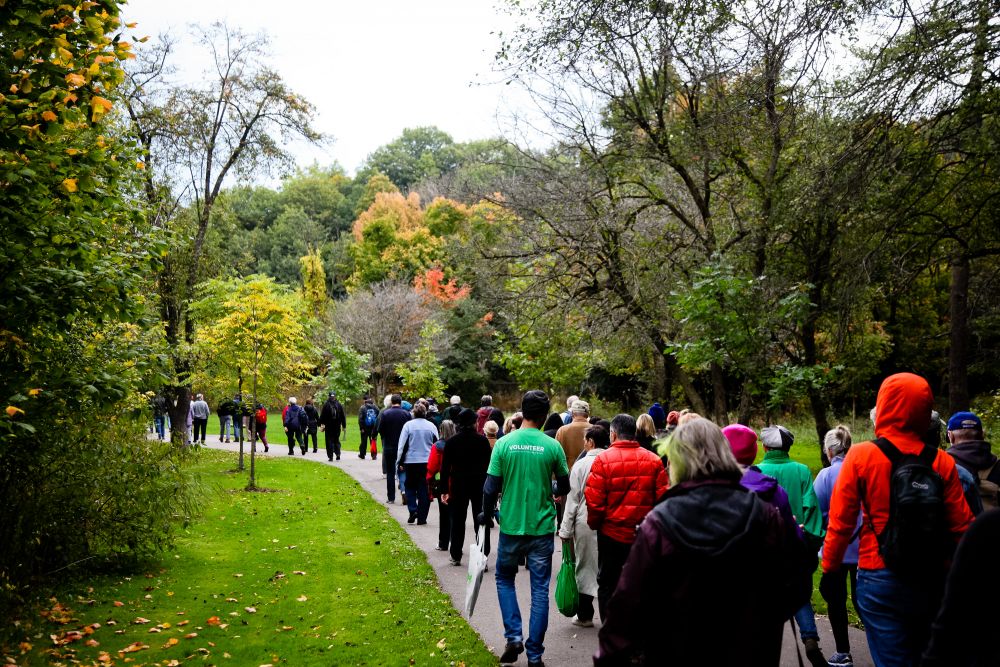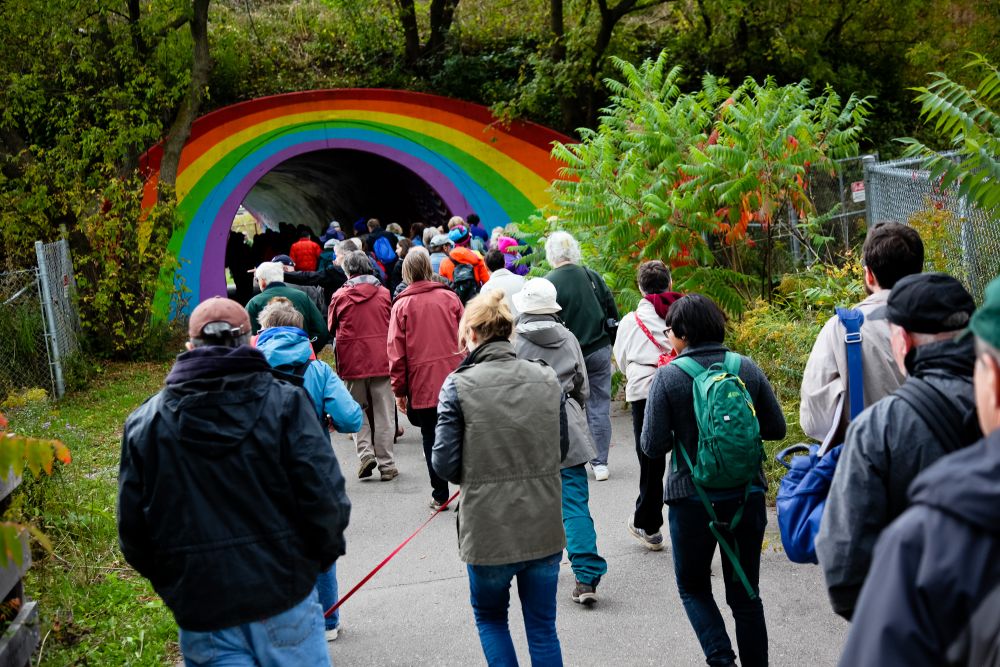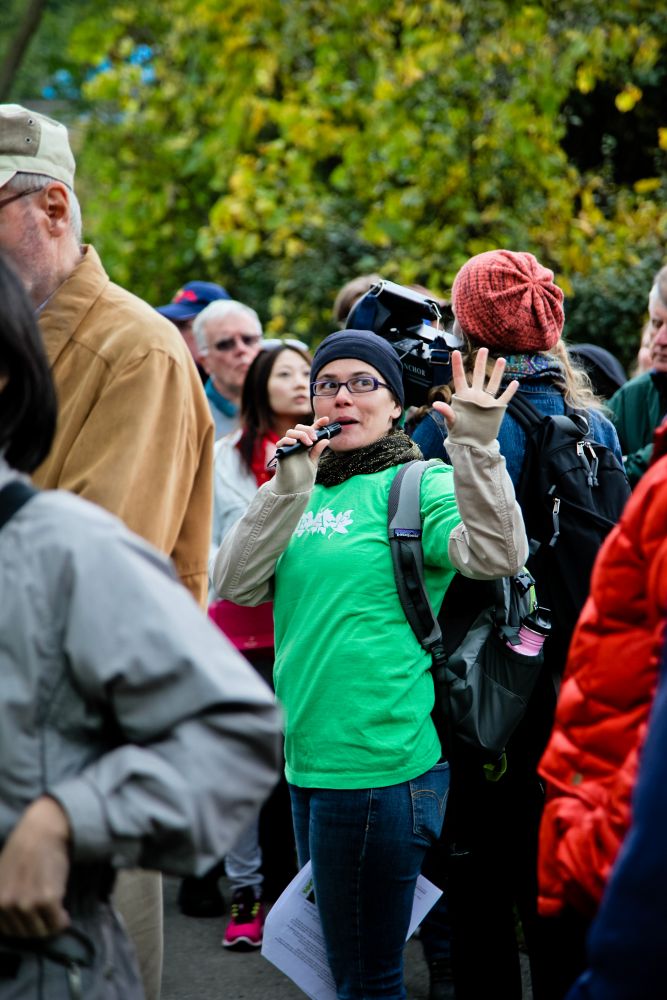There are few places in the city where fall can really show itself, in all its sumptuous glory! One of these places, I recently learned, is Milne Hollow in the Charles Sauriol Conservation Reserve of the East Don.

This Sunday LEAF partnered with Heritage Toronto and the Don Watershed Regeneration Council (DWRC) to lead another sprightly walking tour of Milne Hollow. Having previously worked with the City of Toronto to plant native trees and shrubs here, the LEAF team is no stranger to the restoration needs of this civic oasis.

The key words I kept hearing on the tour were restoration, regeneration, re-naturalization and as a precursor, urbanization. Though its beauty remains bold, the current state of environmental degradation in the Don Valley is staggering- but it’s taken us a little time to get there.
In 1886, in a plucky effort to divert the highly polluted, silty water and build a railway with convenience (and for a number of other reasons like flooding) the Don River was straightened! Reshaped from its once vivacious curves, the Don became more of a geometric shape than a naturally flowing and sustainable ecosystem. Its banks were straightened and its wetlands filled in. The Don Valley was (and still is in some respects) like many waterways of the time; a dumpsite for industrial and residential effluent. The restoration work of today aims to address the problems that were born from the Don Straightening Plan.

Catchment and filter ponds have been created over the years to mitigate flooding damage and the effects of stirring up such silt-filled polluted water. Peter Heinz, Chair of the DWRC, argues this is not nearly enough. Major restoration is taking place at the mouth of the river by the City, the DWRC and other community organizations. Invasive species removal and native species planting, again making up for our past blunders, takes place by countless volunteers and a Community Stewardship Program team is involved in monitoring and maintenance.
Let us not forget the deer, coyotes (you heard me), beaver, raccoons (of course no Torontonian forgets a raccoon), salmon, mallard ducks and other diverse wildlife that depend on the forests, meadows and wetlands of the valley. Habitat creation and restoring biodiversity is an integral part of a holistic recovery.

The delicately woven nesting cup of the resident Great Blue Heron is continuously at risk of being washed away with a flood or surge. We can at least ensure he has lots of healthy building materials to give the Mrs.!
Nearing the end of the tour, LEAF’s own Robyn Stewart directed us to a patch of dying and dead ash trees, caught in the uncompromising path of the Emerald Ash Borer (EAB). Along with passing around a preserved EAB and its larvae, Robyn again discussed the salience of biodiversity and avoiding monocultures in restoring our urban forests of the future. Learn more through LEAF’s EAB Ambassador Program and find out how you can help.

The diversity found in Milne Hollow really should be noted as astounding considering all the strife it has endured! The bright reds of the staghorn sumacs and the pure yumminess of the locally endangered butternut trees are just what any city dweller wants to see in fall.
Carly Leggitt is a volunteer for LEAF.
LEAF's Tree Tours are supported by Ontario Power Generation.
